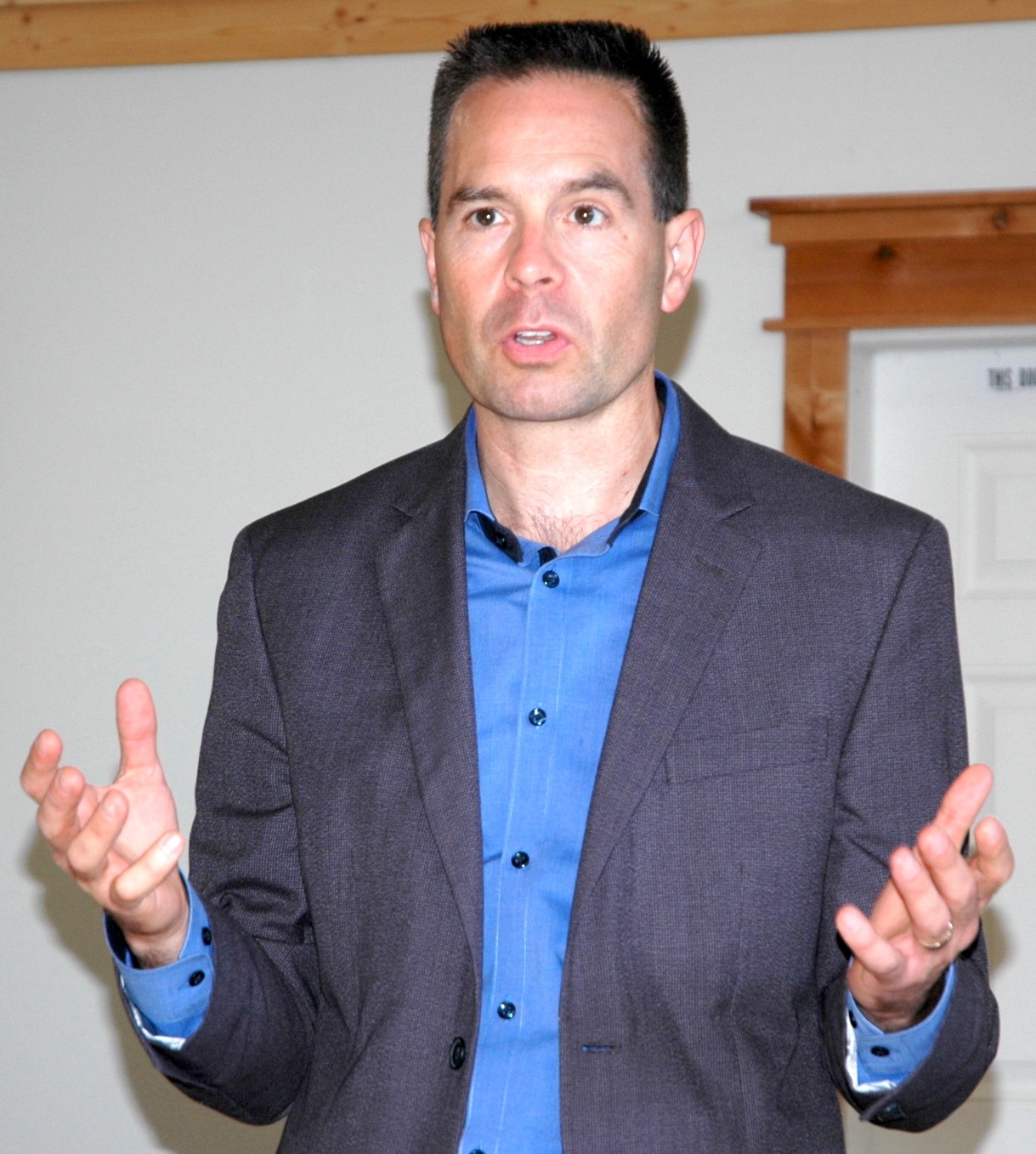MARYSVILLE — Waterfront plans, fire levies, traffic safety, code enforcement and neighborhood watch efforts were all discussed during Mayor Jon Nehring’s Aug. 8 Coffee Klatch at Jennings Park.
Nehring opened the latest in his series of conversations with the public by explaining that the city’s waterfront is undergoing “a massive revitalization” as the city has purchased a number of buildings and lots, and secured federal environmental grants to clean up contaminated areas.
“If we just bought up the land and tried to sell it back, most people wouldn’t touch it because they wouldn’t know how much money they’d have to spend cleaning it up,” Nehring said.
Nehring elaborated that the city envisions park and concert spaces, a put-in point for kayaks and possibly even seasonal eateries.
Parks and recreation director Jim Ballew promised the public nearly four miles of new trails east of the Highway 529 bridge, which would extend Harborview Trail and branch off around the estuary.
Ballew expects the first of four phases of new trails to be complete by the end of this year, and looks forward to seeing schools take field trips along the new trails, which will feature educational areas.
The mayor was asked about a youth advisory council, like one that is just starting up in Arlington.
“We did have a youth advisory council a while ago, but honestly, the attendance just fizzled out,” Nehring said. “Kids are just so busy these days.”
Nehring confirmed that the Marysville Fire District is exploring a possible regional fire authority with Arlington, but assured voters that the proposal would go to them for approval. Nehring clarified that such an RFA would come with a new tax, but that the existing tax would be dropped.
Concern was expressed about speeders at the intersection of Highway 528 and 67th Avenue. The city was asked if better crosswalks or more flashing lights could be installed.
Nehring noted that 528 is a state highway, but touted the city’s good relationships with the Washington State Patrol and Department of Transportation as reasons to feel confident they could find a solution.
Nehring believes in making Marysville more walkable, and bikable, but as he told one person who asked about installing new sidewalks, the size of the city limits its ability to renovate roads as proactively as staff would like.
“We’ve got a lot of older roads,” Nehring said. “But any time we perform other projects on those roadways, we do the full deal, adding more walking and biking opportunities.”
City public works director Kevin Nielsen added that the city spends roughly $400,000 a year in “filling in those gaps,” and leverages those dollars with grants “to get more for less.”
As for code enforcement, Nehring described Marysville as “pretty strict,” but argued that “there are some tough cases,” usually amounting to no more than 4 percent of the population, who refuse to comply.
“We encourage people to clean up their property voluntarily,” Nehring said. “If that doesn’t work, we go to fines. Court proceedings come after that, but judges are cautious about putting people in jail for code violations. We enforce all the laws on our books, but we have to show judges that we’ve made good-faith efforts to get people to comply.”
Community development director Dave Koenig recalled five houses he’d helped clear out, noting that a lack of water and sewer services is a warning sign of a drug house. Nehring added that even drug houses take time to get cleared out.
“These aren’t easy issues,” Nehring said. “But in the six years I’ve been mayor, and all the years I was on the City Council before that, I can say that our city has never been more focused on code enforcement than it is now.”
Much easier to resolve is graffiti, which the city partners with graffiti victims to clean up.
“It used to be, if your property got tagged, you were on your own,” Nehring said. “Most cities just tell you that you have forty-eight hours to clean it up yourself. Here in Marysville, our code enforcement folks come armed with three different colors of paint, to cover up the graffiti for you.”
Koenig relayed that incidents of graffiti are on the decline, which Nehring credited in part to online reporting of graffiti, as well as proactive community groups such as the Marysville Volunteers Program. Byron Muck, a member of the MVP, said the group has grown from 13 to 33 members.
“Crime is cyclical,” police chief Rick Smith said. “We utilize crime analysis to address specific areas, but our focus is citywide.”
Marysville police use the latest statistics to figure out where the “hot spots” are, and even work with public works to implement measures such as installing more lights in those locales.
“But the only way we’re going to reduce crime is if more people are willing to step up,” Smith said. “It’s not a one-hour show on TV. There’s no instant solution. We’re always looking for a better way to do things. But part of that has to be neighbors talking to each other.”



